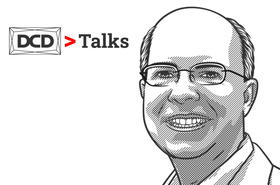As data center leaders, we’ve been accustomed to growth, every year, in every market. Many of our assumptions and our customers’ assumptions rely on that pattern.
1. Supply chain volatility and price escalation
However, we know that growth isn’t inevitable. In 2023, it’s becoming clear that the data center industry is facing a set of headwinds or challenges that will make it harder than ever before to sustain growth and momentum.
So, in order to help us adapt to change, here are five challenges we see facing the industry.
Until 2020, we and our customers expected data center builds to come in at lower cost points and faster time to delivery because our industry had a track record of cutting costs and accelerating builds. But over the last two-and-a-half years, we have seen a complete reversal of that trend.
- Our costs are going up – for construction, data center equipment, and labor
- Timelines are less predictable and average competition times are increasing.
Thanks to supplier volatility, price increases, and delays, it's becoming difficult to commit to typical timelines at typical price points. As a result, we’re struggling to keep up with demand.
The old models and expectations in the industry no longer work, and a new realism has to emerge. As organizations continue to plan their data center builds, they’ll have to contend with inflationary pressures, both on time and cost.
When will this cluster of challenges be resolved? Regardless of whether it’s 18 months or 5 years, the industry will be dealing with the implications of this shift for years to come.
2. Power availability
We can no longer assume that power will be available. The industry is facing pressure on grids, delays to modernization initiatives, and issues in delivering additional power generation capacity or power distribution capacity.
We see examples of this challenge around the world.
- In Ashburn, Virginia, the single largest data center market in the world, Dominion Energy notified data center companies that electricity for some new facilities in Eastern Loudoun County will be delayed, perhaps for years – slowing or halting new build plans around Ashburn.
- Over the past few years, Singapore, Ireland and the Netherlands, among multiple other countries, have put pseudo-moratoria on new data center build outs.
- Even Silicon Valley is running out of power.
To put it simply, power capacity and power distribution build outs are not in sync with data center demand and are putting serious constraints on data center builders and operators.
This challenge impacts the industry in three ways:
- New builds can’t be started and expansions can’t be completed.
- Guaranteeing utility quality, over time, is getting harder. Operators are forced to factor in power issues when evaluating capacity and uptime.
- Old assumptions about data center placement are in flux.
3. Business instability
We can’t predict the future, but it’s clear we’re dealing with challenges that impede our ability to perform and compete. Many pundits expect a recession soon, which will add more pressure on everyone in the industry. In a world with so much uncertainty, it’s possible that some companies will struggle to perform…or even survive.
Two categories that seem most at risk are equipment suppliers and integrators, due to the reliance on them and the high standards expected of them. Decreased predictability around inventory, supply chain, and deliveries could put them at risk. A series of missed delivery dates or quality issues could wreak havoc on their ability to stay in business.
And of course,if some of these companies downsize or go out of business, that change will put new pressures on supply chains and build out capacity. If suppliers and integrators go out of business, we can all expect more delay, more uncertainty, and added pressure on other suppliers and integrators.
The problems among operators are likely to be less widespread, owing to their size, stability, and unused capacity serving as a cushion. Fortunately, retail demand remains strong, and pricing hasn’t dropped to the point that it affects overall business models, cash flow, or profitability – yet. Downward pricing pressure, despite capacity constraints in some regions, in combination with the rising costs of labor, equipment, and maintenance, warrant concern and will be a point to monitor over the upcoming year or two.
If we look at enterprises, we can see that some will be well-positioned to avoid data center problems, and others won’t.
Healthcare is one industry that probably faces difficulty in the new world. Their outsourced, colocated capacity is likely to be fine. However, many healthcare providers have insourced, on-prem data centers that are fifteen to twenty years old. They’re likely to face ongoing reliability problems and difficulty with cooling equipment, while doing retrofits or new builds will be difficult – putting them in a tight spot.
For that matter, if any organization has dated datacenters, making improvements or expansions will be a challenge, putting them at risk from a data center operations perspective.
4. Data center density
Every year for two decades, the industry has said that we’ll see increasing rack density – but we haven’t really seen a shift in mean rack density.
However, the latest generation of servers, and the increasing reliance on accelerators should start driving a shift in density this year. We could legitimately see power and cooling demands of 1.5kw/rack unit. If enterprises and data center operators really want to get the peak power and performance out of the latest generation of servers, there will be a shift to higher density – and liquid cooling.
Air cooled designs aren’t going to be viable over the long haul. We’re already seeing massive innovation in this space, including liquid cooling tech that supports 50mW per rack and beyond – but the overall industry is simply not ready for that, and our stock of existing data centers will struggle to support those requirements without expensive retrofits (that are themselves supply chain constrained).
Finally, there’s another challenge which, in a sense, dwarfs them all. It will be so widespread, so unpredictable, and so variable – the industry won’t know how to cope.
5. Government regulation
Despite a few attempts and efforts for the industry to work up guidelines for regulation, like the Digital Climate Alliance, in 2023, politicians will become increasingly focused on regulating the data center industry.
Let’s be clear: these regulations are intended to make the world better. An excellent example is the set of regulations in Ireland that are aimed at cutting carbon emissions from power consumption. That’s a worthy goal, and one the data center industry should absolutely support – not just for practical reasons, because the Irish government won’t bend – but because the industry should be leaders at using sustainable energy sources and reducing water consumption.
Unfortunately, those regulations are probably going to stifle innovation. We’ll see laws and regulations that require everyone to meet certain standards which could end up resulting in lock-in, with every data center looking the same, even if the industry innovation could move past the standard.
It’s not unusual for regulations to have a crippling effect. But to make matters worse, what we’re likely to see is a myriad of regulations at local, state, and national levels – all of which are different from place to place. Efforts around excellence and standardization will suffer if requirements vary from county to county. Starts will be delayed and some areas will become no-go areas for new data center construction.
Conclusion
There’s no question the data center industry is in a complicated place for the next few years. However, forewarned is forearmed. We’re all smart and capable, able to devise strategies and tactics for getting things done despite the increasingly uncertain environment and the likely changes coming to the data center industry over the next few years.
Interested in learning more about the future of data centers? Our new eBook, '5 Things to Expect in Data Centers Over the Next 5 Years', goes deep into density, cooling tech, design, and more.
Nautilus Data Technologies delivers data centers around the world that are more environmentally friendly, quicker to build, and can be placed anywhere there’s a sufficient body of water and electrical supply. To learn more about available sites or choosing your own site, visit us at https://nautilusdt.com/available-sites/
More from Nautilus Data Technologies
-

Sponsored Community connections
With data center sustainability now under intense scrutiny from both outside the industry as well as within it, how do these power-hungry facilities integrate with the communities they move into?
-

DCD>Talks Revolution with Jim Connaughton, Nautilus Data Technologies
We sit down and talk with Jim Connaughton, CEO and President of Nautilus Data Technologies, and former Director of the White House Office of Environmental Policy
-

Can data centers really float?
Data centers on a boat could come to a harbor near you…

